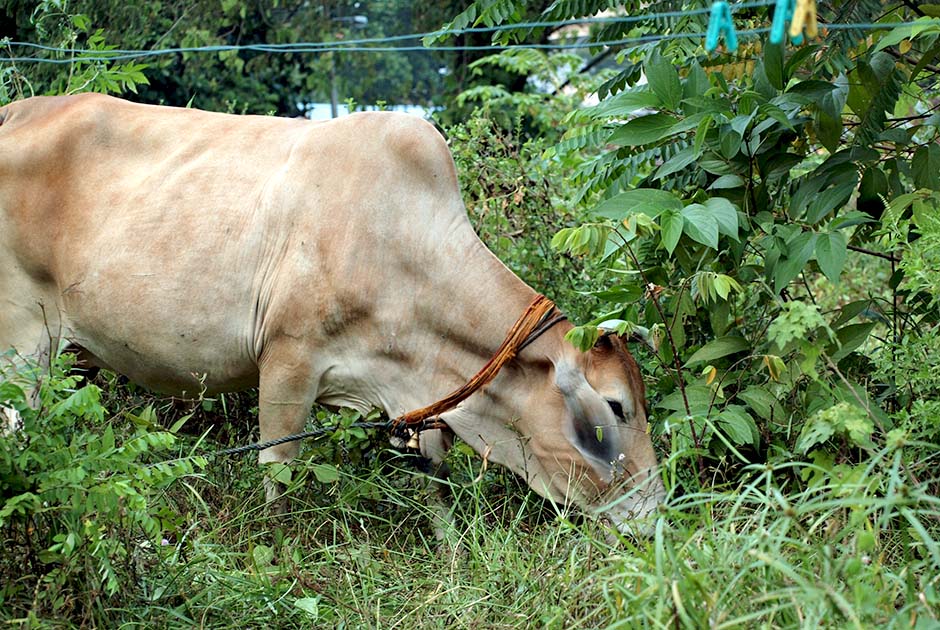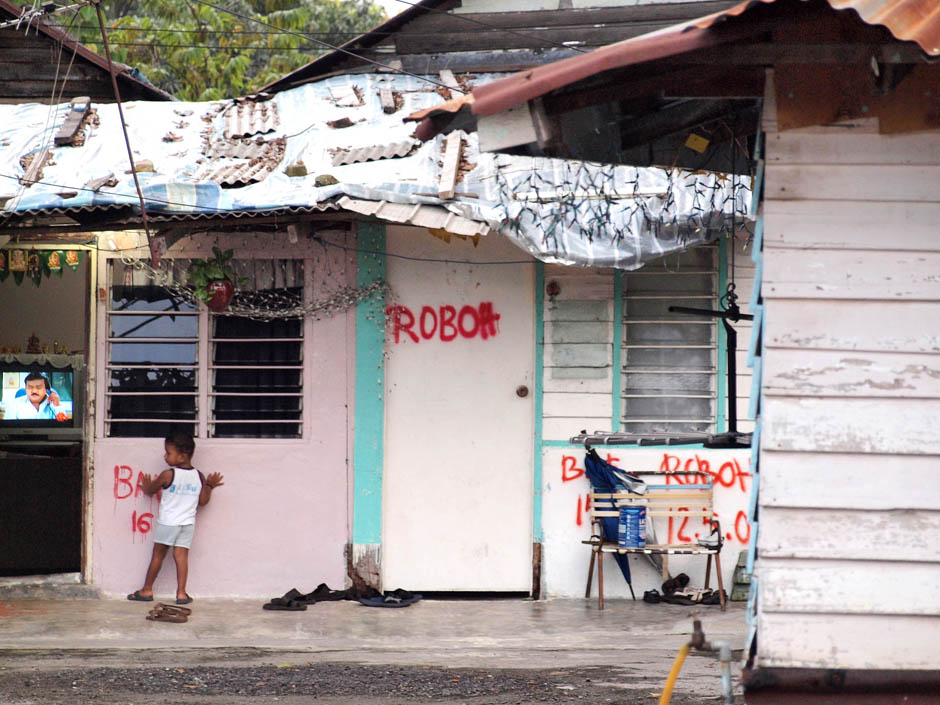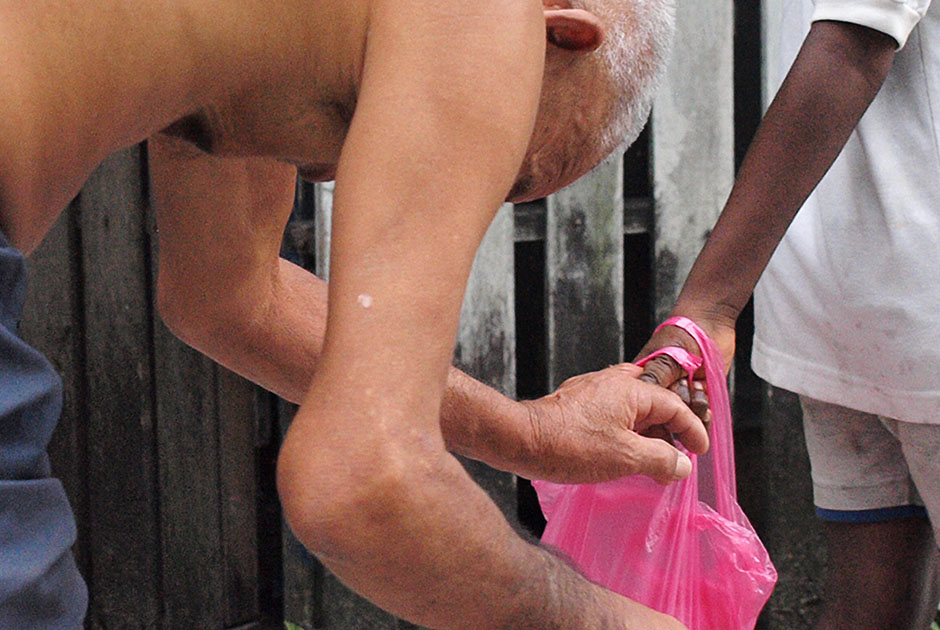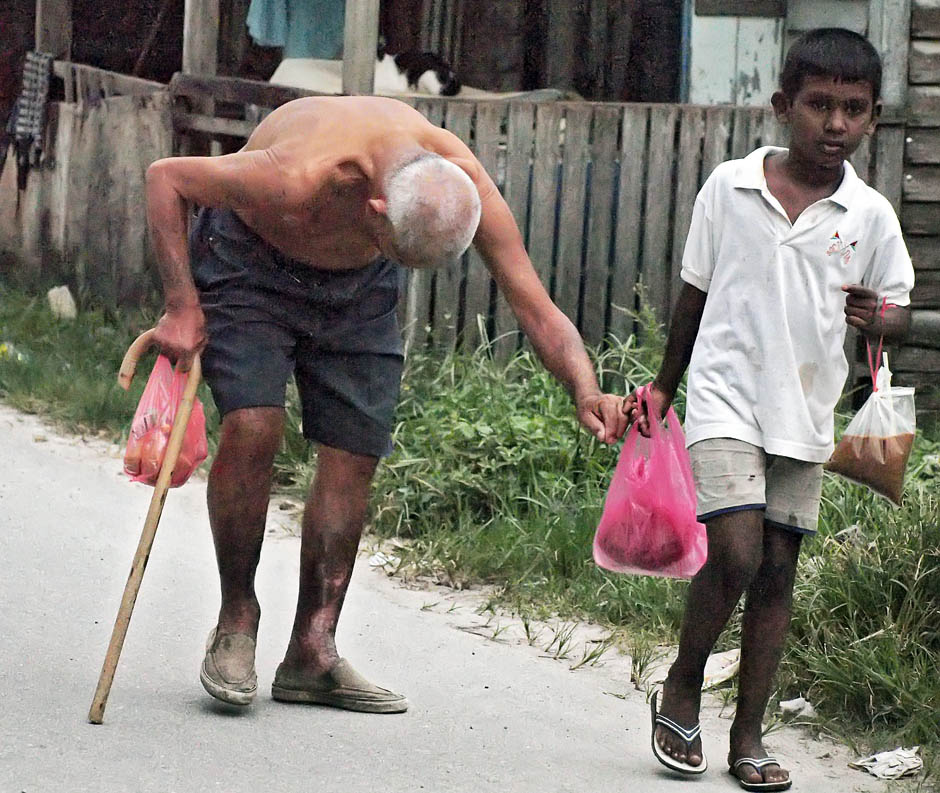
The back half of these rows of terrace houses started coming down two weeks ago.
It was on this desolate road at Kampung Sentul Pasar that we met Raja. His family i
s one of a handful left inhabiting the remains of houses, which once provided shelter
for KTM staff. Sections of his roof are covered with frittered sheets of tarp.
“I'm okay with being resettled in a flat,” says Raja in Tamil. “But why send me and
my family packing to a place deep at the fringe of Puchong? How do I start again?
How do I find work? I was born and raised here in Sentul Pasar. My support is here.
Sini boleh cari kerja – tolong bawa lori, angkat barang. It's as good as taking away my livelihood.”
His voice remains even, but it gets raspy from the built-up frustration.
“Macam mana mau dapat susu untuk anak?” he gestures towards the
direction of his wife and five-month-old baby.
Raja's problems highlight the core issues in the nation's task of resettlement
and the urban poor. It's one thing to have a Zero Squatter policy, but another
when we examine the means to this end. Current mechanisms lack a basic virtue: Heart.
These are human beings here.
For too long, we have relied on Cold War-era social housing ideas and methods.
We cannot rely on just one model – the 750 sq ft high-rise apartment unit –
for the whole country. Nor can we simply decouple a family from its roots and
economic links. True, these projects provide shelter. But they sever ties.
They are not conducive for larger families. In many instances, these resettlement
exercises are a continuing stigma to those who have been relocated.
And how do you accommodate members such as these?:

There are sufficient affordable housing models from around the world, most notably Balkrishna Doshi's Aranya Community Housing project in Indore, India. It was undertaken by the local government, the Indore Development Authority. Implemented in 1983, this boldly imaginative project has been recognised numerous times over, including being awarded the Aga Khan Prize in 1995.
In her book, Architecture beyond Architecture, Cynthia Davidson writes about the project:
"But perhaps more important than the design goals this project has achieved are the social goals that it promotes, by creating common spaces where Muslims, Hindus, Jains and others in this neighborhoods can mix, the project promotes co-operation, neighborliness, tolerance and cohesive social relationships. In addition, it actively provides a socio-economic mix that provides for cross-subsidies and financial viability."
From Kampung Buah Pala and Kampung Tanjung Tokong in Penang to the Sentul heartland of Kampung Chubadak, Kampung Tanah Lapang, and Sentul Pasar, we see the ravenous appetite of redevelopment displacing thousands of citizens who are without the might of money.
In more than one instance, it has become political baggage leading to the fall of incumbents during elections. All this will not change without more imaginative models and policies on social and affordable housing. The existing bodies need more sensitivity and collaboration in dealing with urban redevelopment. Progress must come with a heart.
So far things do not look too good if inhumane scenes such as these taken at Kampung Tanah Lapang continue:
 Fellas, you don't spray 'ROBOH' on a house. No matter how stubborn the occupants are, you just don't. The act betrays how the various parties involved view these people.
Fellas, you don't spray 'ROBOH' on a house. No matter how stubborn the occupants are, you just don't. The act betrays how the various parties involved view these people.
Heart.
What is it?
The lessons can be found right in the very streets where these structures are being torn down. Yesterday at the dusty lane of Kampung Sentul Pasar, while listening to Raja, we saw this:

See the hands. See how they tenderly intertwine.
A boy, Indian Malaysian, was leading an elderly man - so aged his back could not straighten - down the path. The man is a Chinese Malaysian. His legs were full of sores. Together they carried their packed meals.
Slowly. Ever so slowly, they walked.

The boy was leading grandpa home.


